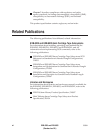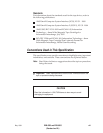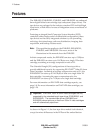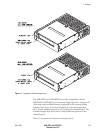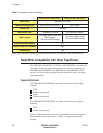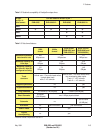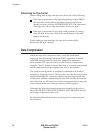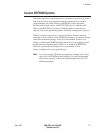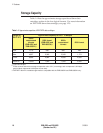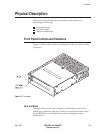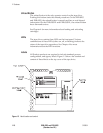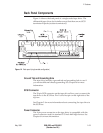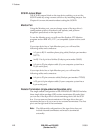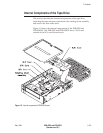
Determining the Tape Format
When writing data to tape, the tape drive does one of the following:
If the tape is positioned at the logical beginning of tape (LBOT),
the tape drive writes data in the default format or whatever
format you select with the SCSI MODE SELECT (15h) command.
(The tape drive allows only one format on any one tape.)
If the tape is positioned at any other valid position for writing
data, the tape drive writes data in the same format as the data
already on the tape.
When reading a data cartridge, the tape drive automatically
determines the tape’s format.
Data Compression
When the tape drive compresses data, it uses the established
Improved Data Recording Capability (IDRC) algorithm. Licensed
from IBM, this algorithm is the de facto standard in mainframe
environments. The tape drives also use the Exabyte Compression
Integrity Check™ feature to ensure that data is accurately compressed
and decompressed into the original form sent by the initiator.
The compression algorithm is completely contained in an Exabyte
proprietary integrated circuit. The tape drive invokes the compression
algorithm intelligently, constantly monitoring the compression ratio
to determine whether compressing the data will actually decrease the
size of the data set. The tape drive sends compressed data to tape only
when it benefits the user’s storage capacity and throughput.
Although the actual data compression ratio depends on the type of
data, the EXB-8205, EXB-8205XL, EXB-8505, and EXB-8505XL achieve
an average compression ratio of 2:1.
For detailed information about how the tape drives compress data,
see Chapter 3.
1-6 EXB-8205 and EXB-8505 510504
(Standard and XL)
1 Features



